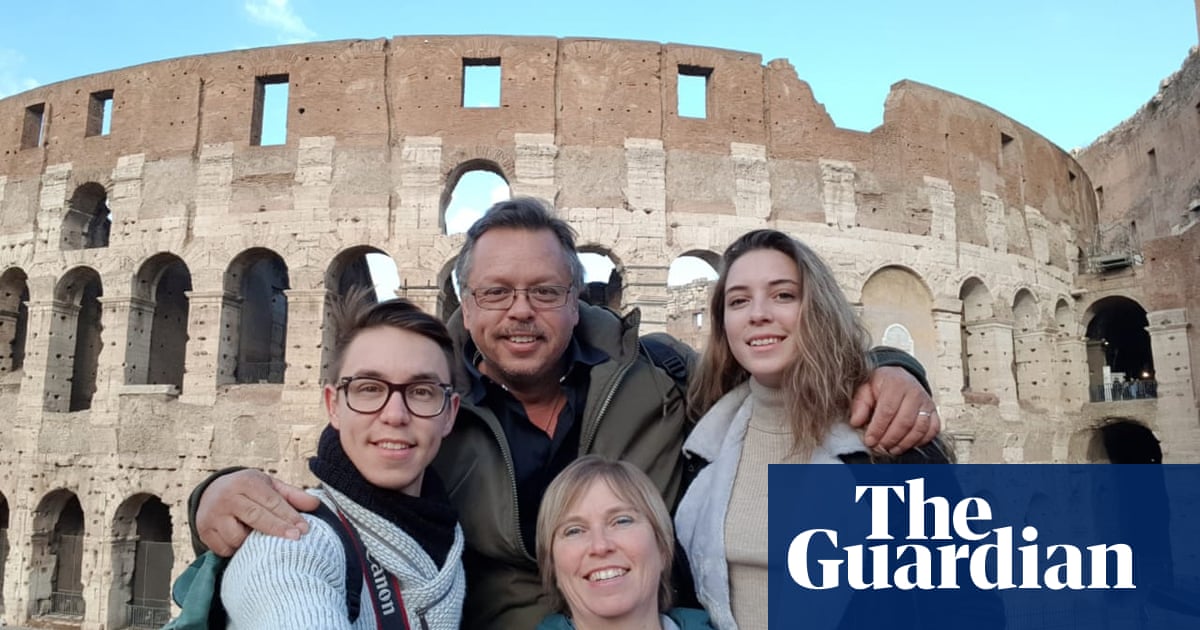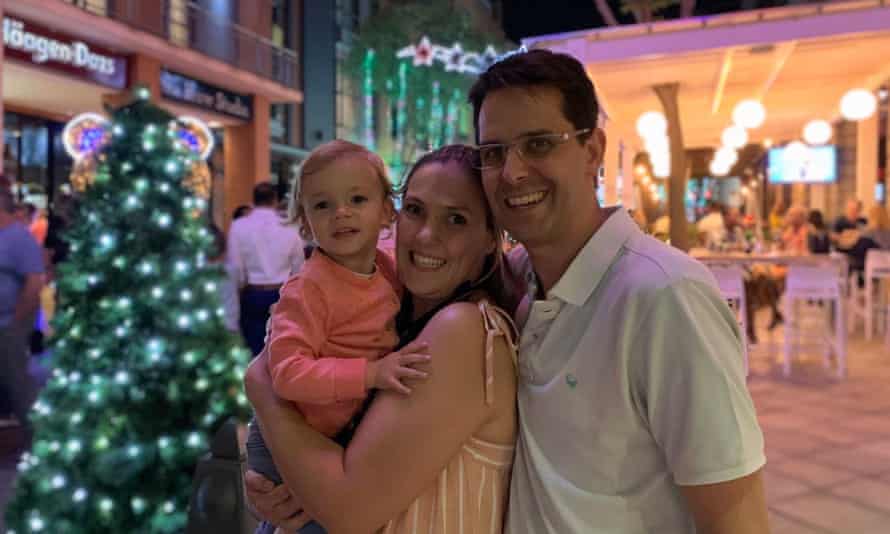
In February 2020, Craig Hurn, 53, temporarily left his wife and daughter in Cape Town to scope out the job market in New Zealand. After beating six other candidates for one job, he secured an essential skills visa and began preparing to move his family over.
“We saw Craig’s CV and we thought, ‘Oh my God, he can walk into the job,'” says his employer, who struggled to find any workers with the highly specialised qualifications to fill the position.
But reuniting the family was another matter. Over the course of ten rejections for border exemption, the family, who had sold everything and moved into a rental, endured months of anguished waiting. “We end up crying together on the telephone,” says Hurn.
Then, in April, the government announced it would start letting the families of highly skilled and high-earning workers, one of three new categories eligible for exemption from the border closure, into the country. Hurn seemed to tick every box: he was an experienced mechanical engineer, unable to be replaced by a Kiwi, was working on approved infrastructure projects, and made more than double the median salary, or $106,080.
Yet two weeks after applying, Hurn’s family has been rejected again, with Immigration New Zealand (INZ) unsatisfied he has “unique experience and technical or specialist skills that are not readily obtainable in New Zealand” – despite granting him an essential skills visa months earlier. It’s put him on the verge of heading home for good.
Hurn is one of three such “category three” migrants the Guardian spoke to who have been rejected since the government’s announcement, all of whom provided employer testimonials, CVs, rejection letters and other documents. All have been separated from their wives and children for over a year and are on the brink of leaving.
Critics say their stories illustrate how New Zealand’s post-pandemic economic recovery as well as its global reputation for compassion could be jeopardised.
‘Ready to pack up and go home’
Patrick Tedeschi, 41, hasn’t seen his family in Brazil since January last year. A senior developer for accounting software company Xero, his rejection three weeks ago is the fifth time they’ve been denied by INZ, despite meeting the category three requirements. Between running two households on one salary and the behavioural issues his five-year-old son developed due to his absence, he’s at the end of his rope.

“It’s been very, very hard,” he says. “We are very close to cancelling the mission and going back. We are on the edge. Near Christmas last year, it was a very difficult moment.”
Immigration Minister Kris Faafoi introduced category three after months of criticism over the ongoing plight of split families, as a “limited exception” meant to “retain highly skilled temporary workers necessary for New Zealand’s economic recovery.”
Yet cases like these suggest that despite being singled out for reunification, little has changed for these migrants, due to what critics call inconsistent and arbitrary decision-making from INZ. According to a Newshub report last week, just 15 family members have been approved under the new exemption rules for highly skilled workers.
“We have very highly skilled workers who are ready to pack up and go home because of the selective border closure problems,” says immigration lawyer Alastair McClymont.
The consistent story is there’s a huge demand for workers, but a shortage of talent
Shamubeel Eaqub
This has wider implications for New Zealand’s economic recovery. Employers have complained of a labour shortage over the past year, and despite Faafoi’s claim that the jobs vacated by migrants will be filled by Kiwis, economist Shamubeel Eaqub says the numbers don’t bear that out. Government statistics show only 25,000 Kiwis came home in 2020, he says, fewer than the roughly 30,000 who returned annually from 2015-2018, while about 55,000 work and student visa holders left for good last year.
“I’ve been around country talking to clients in recruitment, and the consistent story is there’s a huge demand for workers, but a shortage of talent,” says Eaqub. He warns this could worsen once borders reopen, which he estimates could see up to 80,000 Kiwis depart. These are dramatic numbers for a small country that typically depends on immigration to fill skill demand, and whose infrastructure, from housing to health care, is under strain from years of underinvestment.
“If you don’t have people to do the work, it can’t be done,” Eaqub says.
For Hurn’s employer, the rejection has put them in a quandary. With him on board, the business had been on track to meet rising demand and expand, planning to hire locally for an additional sales representative and another engineer, whom they intended Hurn to mentor.
“It’s incredibly, incredibly worrying. And puts an enormous amount of pressure on us,” his employer says. “I actually don’t know what else to do for Craig.”
An ‘astonishing’ lack of foresight
Another case is Gray Todd, 41, an architect who last saw his wife days before the border closed, when she departed for Johannesburg after their “look-and-see” trip. They’ve since missed birthdays and anniversaries, while he’s watched his daughter grow from a baby to a little girl through a screen.

“You take the best part of you, the thing you love and enjoy the most, and you take it away,” says Todd. “It’s probably the cruellest thing you could do to somebody.”
His employer, Creative Arch director Mark McLeay, calls the prospect of his leaving “devastating” for the company, which spent months sifting through dozens of unsuitable applicants. With much of their work focused on the critical areas of leaky buildings and first-time buyer homes, it will put undue strain on the rest of the team.
“It’s just astonishing the government don’t have the foresight to see what’s happening in our economy,” he says.
Nicola Hogg, general manager of border and visa operations at INZ, said that while the body was “sympathetic to the impact New Zealand’s border restrictions are having on some migrant families, INZ’s role as a regulator is to assess all requests for a border exception against the relevant criteria as set out in immigration policy … INZ has no ability to apply discretion when considering requests for border exceptions.”
She said that under the two other exception categories announced in April a total of 892 family members had been allowed in.
But if even highly skilled migrants continue to be denied, it bodes ill for the prospects of the thousands of other separated families who fall outside the category. Critics claim the new categories are already too narrow and discriminatory as is.
“The so-called low skilled workers were essential and frontline workers through lockdowns,” says Anu Kaloti, president of the Migrant Workers Association NZ. “Prioritising visa relaxations based on workers’ skills or the capacity to generate wealth is not only against basic human rights, but is not aligned with brand New Zealand as known internationally.”
And the dent that brand has taken could well reverberate into the post-pandemic recovery, if the country struggles to fill labour shortages once borders reopen.
“We’ve started developing a Canadian immigration arm to our business because that’s all our clients want to do now,” says McClymont. “Migrants here are left in no doubt whatsoever that this government does not want them and does not value them.”
